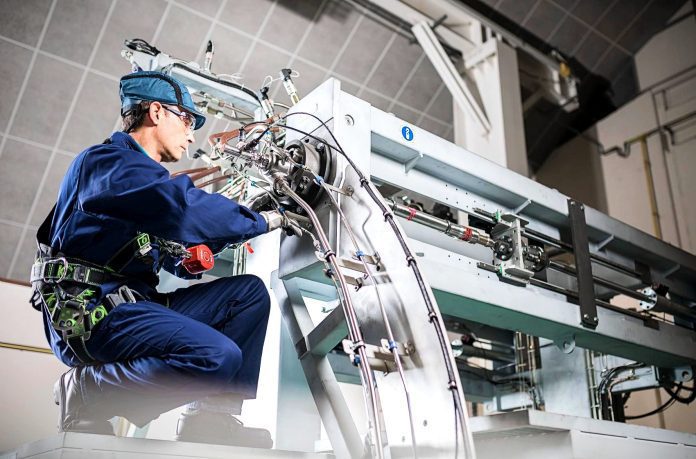Orange Business Services, the IT and system integrator (SI) division of mobile operator Orange, has delivered a non-cellular Bluetooth Low Energy (BLE) based indoor tracking system for aerospace manufacturer Safran Aircraft Engines across two sites in France. The solution pulls together tracker tags from French firm ELA Innovation, network gear from Finnish outfit Quuppa, and a management platform from UK-based Ubisense.
At the outset, the deal covers the installation of more than 15,000 BLE trackers, to be attached to industrial tools and engine parts, plus 250 BLE antennas, at twin production sites in Villaroche and Saint-Quentin-en-Yvelines, measuring 55,000 and 20,000 square metres, respectively. The Villaroche site is about 50 kilometres southeast of Paris; the Saint-Quentin-en-Yvelines plant is part of the Paris metropolitan area.
The BLE indoor tracking solution enables Safran Aircraft Engines to pinpoint the location of industrial tools and engine parts — “remotely and in real time”, said Orange Business Services — to an accuracy of around three metres. The operator said it is providing an “integrated software platform”, which it has “adapted” for the task. The rest of the solution is supplied by ELA Innovation, Quuppa, and Ubisense.
Orange Business Services, in charge of the customer relationship and responsible for the system design, said the solution is “based on an ecosystem of industry-leading partners specialized in geolocation technologies in industrial settings”. It would not be pressed on the project’s expansion, but refused, also, to rule out that the BLE system would be rolled out across further sites, nor that it will deploy private cellular networks to spur the firm’s Industry 4.0 drive.
A full interview with Orange Business Services will appear later this / next week; see further discussion of this deal, and of Orange’s role as system integrator in the Industry 4.0 space, here.
The company noted in a press note the twin sites represent complex environments for wireless technologies, with radio propagation and interference impacted by metallic parts and infrastructure. It stated: “Safran Aircraft Engines… needed a solution tailored to the specific metallic environment of the plants, and one that would not cause wave interference with the equipment.”
Safran Aircraft Engines referred to the twin sites as “Industry 4.0 factor(ies)”, and highlighted Orange’s “commitment throughout the implementation”. Christophe Blayo, head of tooling for commercial engines at the firm, said this commitment was “crucial for developing the optimal solution and deploying it effectively”.
Emmanuel Routier, vice president for Industry 4.0 at Orange Business Services, said: “With our dual expertise as a carrier and an integrator, we draw on our ecosystem of partners to bring market-leading technologies together, allowing us to best meet our customers’ needs across the entire value chain. This IoT integration project illustrates our ability to deliver a large-scale industrial project, tackle all the challenges that come with it, and adapt our solutions in partnership.”

